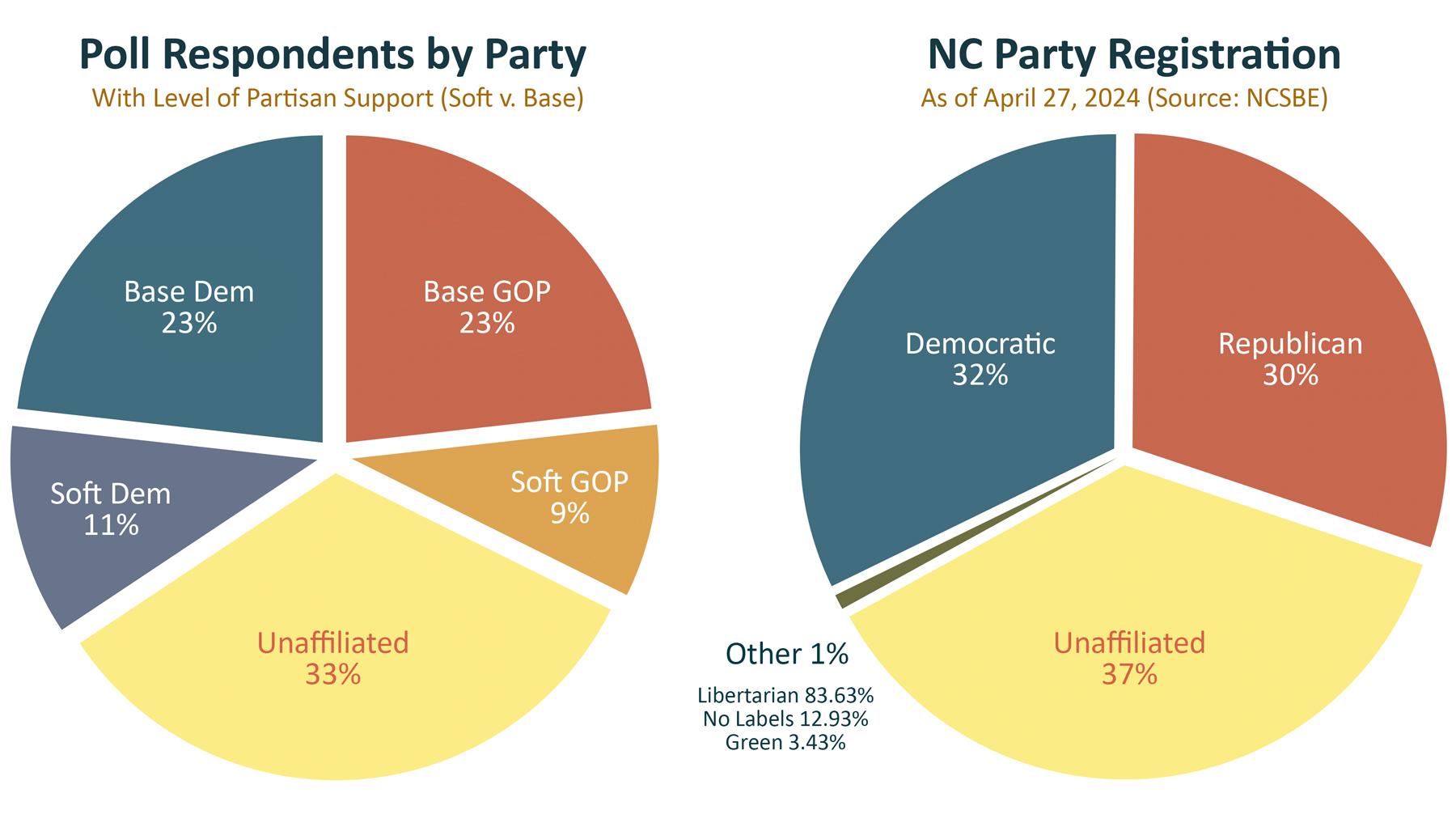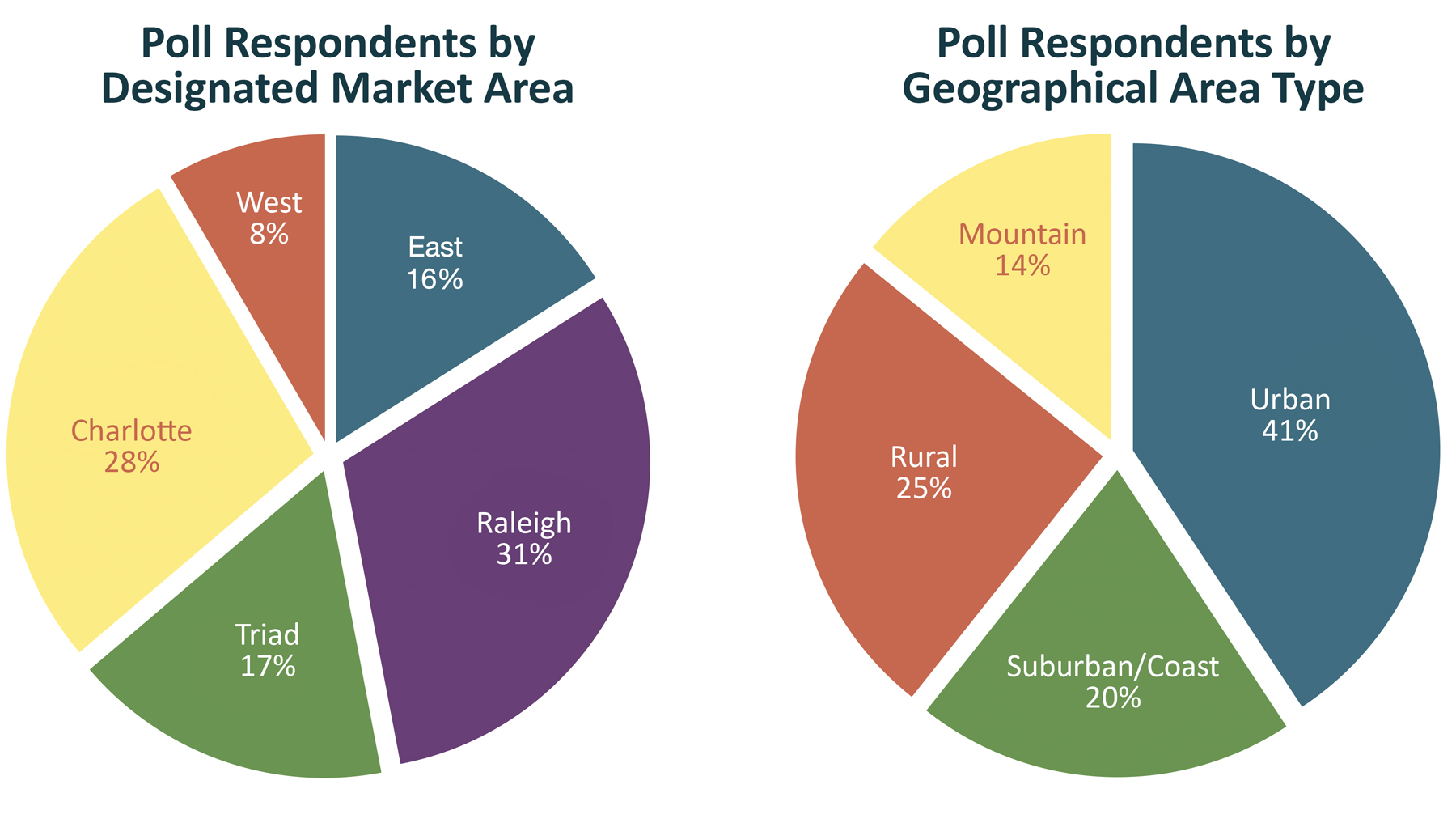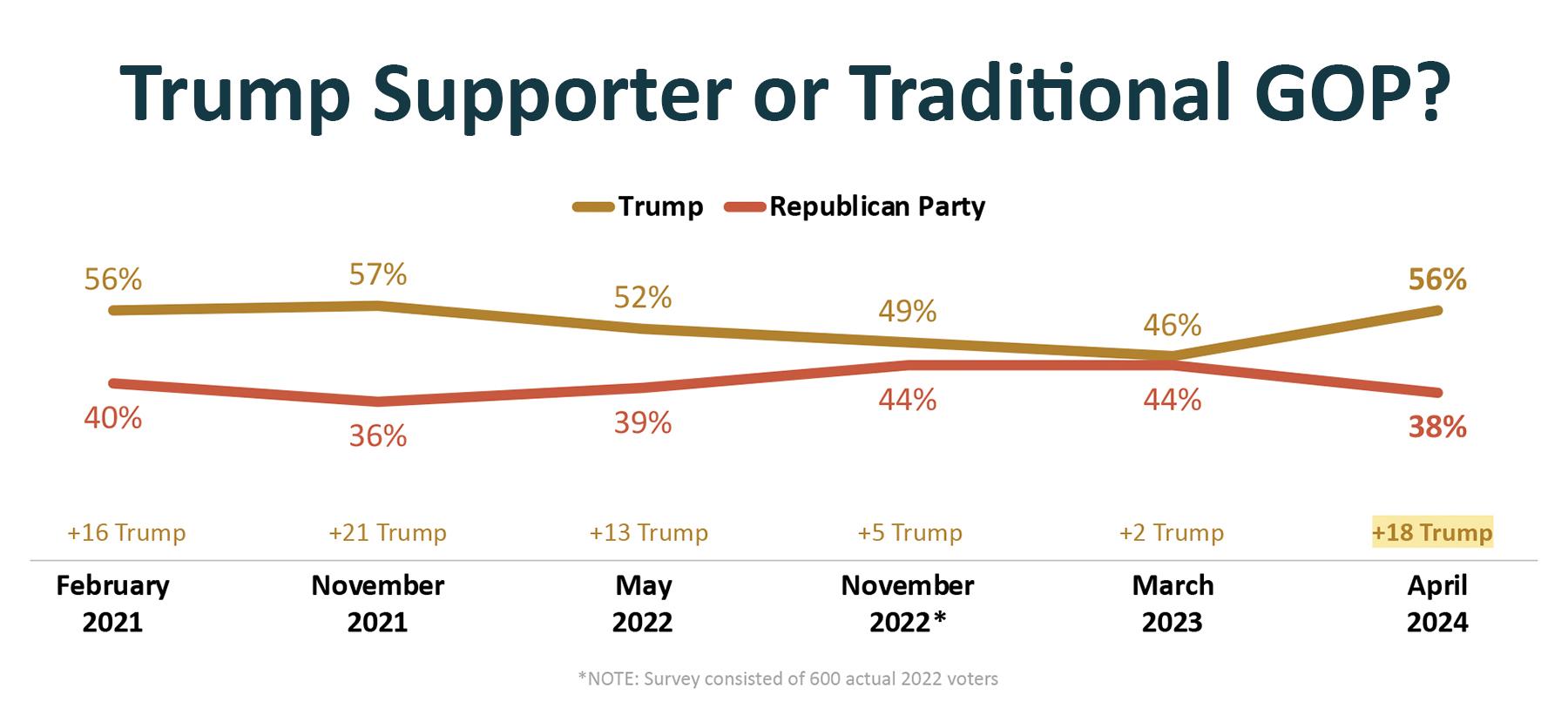Last month, the Carolina Leadership Coalition and the Carolina Partnership for Reform commissioned Meeting Street Insights to conduct a statewide survey of registered voters in North Carolina which took place between April 25-28 of this year. The survey had a sampling size of 500 registered voters with a margin of error of plus or minus 4.38%. This is the 15th statewide survey which Meeting Street has conducted for CLC and CPR since 2014.
The survey covered several key topics, including North Carolina’s Political Environment, the Issue Agenda, Reactions to Legislative Proposals, and a number of other hot-button issues. In today’s post, we will have a look at the methodology behind our poll and North Carolina’s Political Environment.
Methodology
Poll respondents essentially reflected the state’s voter party registration, with 23.23% identifying as hardcore (“base”) Democrats while 11.11% identified as being softer in their support of the Democratic Party; 23.23% of respondents identified as being base Republicans while 9.09% identified as being softer in their support of the Republican Party; and 33.33% were Unaffiliated.
Voter party registration in North Carolina as of April 27, 2024 was 32.32% Democratic, 30.03% Republican, 36.87% unaffiliated, and .78% making up the balance. Of this less-than one percent of “other” voters, Libertarians made up 83.63%, No Labels members comprised 12.93%, and Green Party members 3.43%.

Poll respondents essentially reflected the state’s makeup of voters’ gender and race as well: 54% were female and 46% were male. Statewide voter registration shows 42.46% were men, 49.9% were women, and 7.63% of voters did not indicate a gender.

Poll respondents were distributed among five Designated Market Areas (DMAs). Designated Market Areas are multi-county and in some cases multi-state geographic areas in the United States where local television viewing is measured by The Nielsen Company. 27.8% of respondents lived in the greater Charlotte media market, 16.8% in the Triad media market, 31% were in the Raleigh-Durham media market, 16% were located in the coastal eastern media market, and 8.4% lived in the western media market.
Poll respondents were also distributed among four types of geographical areas: 40.8% were urban dwellers, 20% lived in suburban and/or coastal areas, 25.1% came from rural areas, and 14.1% lived in the mountains.

Poll respondents were also broken down into five age groups: 19% of voters were between the ages of 18 and 34, 17% were between the ages of 35 and 44, 16% were between the ages of 45 and 54, 20% were between the ages of 55 and 64, and 28% were age 65 and older. Poll respondents were also asked about their political ideology, with 17.2% identifying as very conservative, 18% as somewhat conservative, 38.4% as moderate, 16.8% as somewhat liberal, and 9.6% as very liberal.

The Political Environment
Poll respondents were asked “Would you say that things in the country are going in the right direction, or have they gotten off on the wrong track?” North Carolina voters are more pessimistic about the direction of the country today than at any time in the last decade of polling by Meeting Street Insights for CLC and the Carolina Partnership for Reform. The number-one reason is inflation (i.e. the cost of living), which will be addressed in part two of our analysis, which we will post next week:

North Carolina voters’ views about the direction of their own state have also become noticeably more pessimistic recently:

Right before the 2020 election, President Biden had a favorable rating of 50% among North Carolina voters. Today, it’s 39%:

Former President Trump continues to be viewed unfavorably by a majority of voters, though his favorable numbers have inched up over the last year:

Republican poll respondents were asked “Do you consider yourself to be more of a supporter of Donald Trump, or more of a supporter of the Traditional Republican Party?” After President Trump left the White House, Republicans shifted away from considering themselves more supporters of Trump than the Traditional Party; that trend has reversed now that he’s the nominee again:

Governor Cooper’s image rating has been remarkably steady throughout his second term:

Voters have become considerably more unfavorable toward our Lieutenant Governor over the last year:

Attorney General Stein has seen his favorable ratings jump since last spring:

Poll respondents were asked “And if the election for President were being held today, for whom would you vote between Donald Trump, Republican, Joe Biden, Democrat, Robert F. Kennedy, Jr., We the People Party, Jill Stein, Green Party, and Charles Ballay, Libertarian Party?” Six months out from the election, President Trump has a five-point lead in North Carolina, while third-party candidates take in 15% of the vote:

A lot has changed in the presidential race from a year ago. The “Kennedy Factor” complicates the math for both Trump and Biden:

Poll respondents were asked “If the election for Governor were being held today, for whom would you vote between Mark Robinson, Republican, Josh Stein, Democrat, Wayne Turner, Green Party, or Mike Ross, Libertarian?” The race for Governor has flipped in the last year with Josh Stein now holding a slim lead:

Improving his standing among Soft Republicans and White Women will be key to Robinson making up ballot ground in this race:

The other statewide races are well within the margin of error:

While Democrats have traditionally held an edge on the generic State Legislature ballot in North Carolina, Republicans currently lead by six points:

Poll respondents were asked “Now, thinking about the elections later this year in November, how interested are you in the elections for President, Governor, U.S. Senate, U.S. Congress, State Legislature, and various other state and local races? Please rate your interest from one to ten, with one meaning that you have no interest in this election and ten meaning that you are extremely interested.”
Interest in the upcoming election is close to where it was at this point in previous election cycles:

That said, even though we still have a little more than five months to go, Republican voters show more interest in the November elections than Democrats:

In fact, Democrats have some serious “intensity issues” with key parts of their winning coalition:

And by comparison, Trump voters are much more energized now about the elections than they were four years ago:

Click here for Part Two of our analysis.



